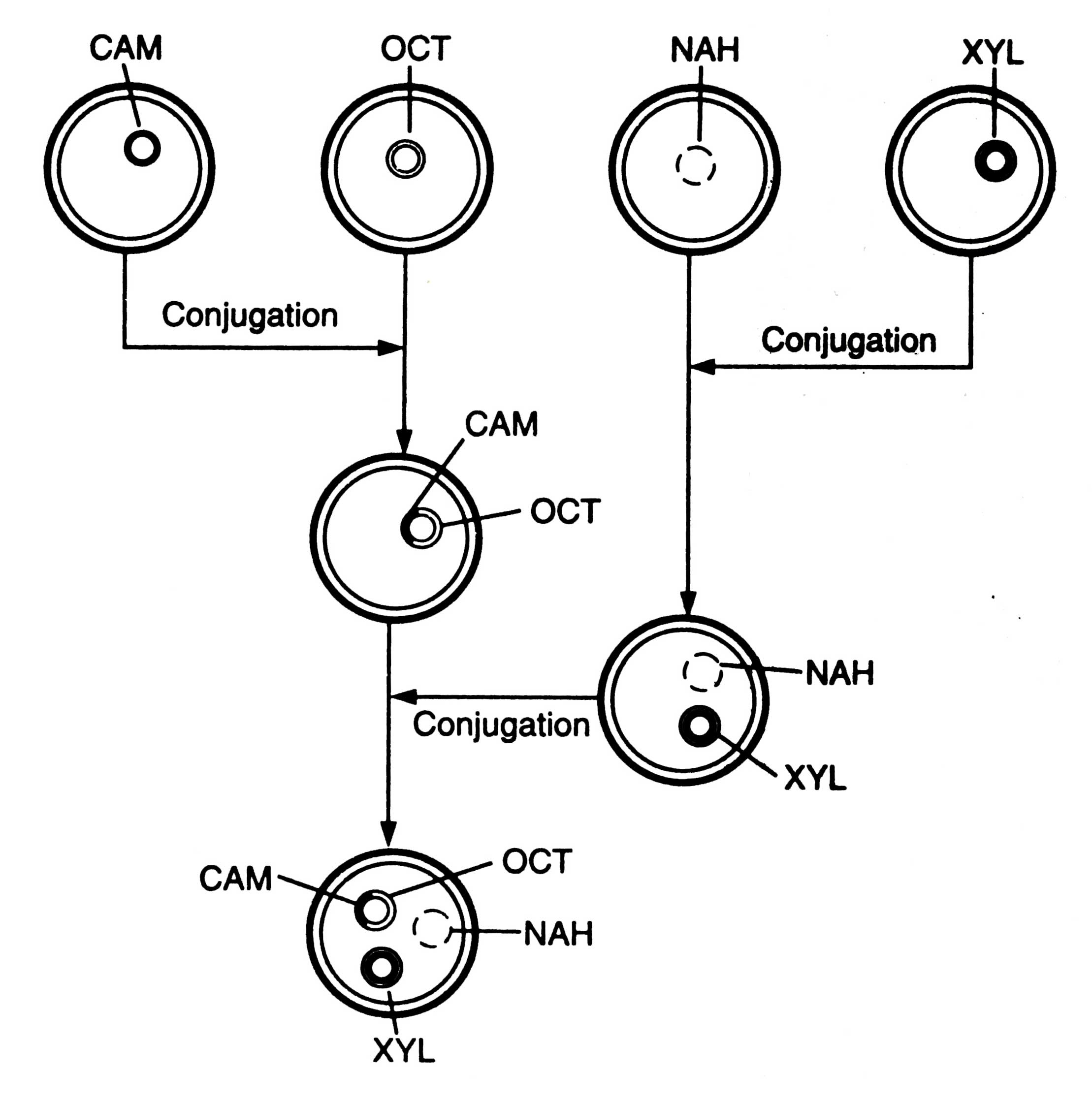Abatement of Pollution through Genetically Engineered Microorganisms
Genes responsible for degradation of environmental pollutants, for example, toluene, chlorobenzene acids, and other halogenated pesticides and toxic wastes have been identified. For every compound, one separate plasmid is required. It is not like that one plasmid can degrade all the toxic compounds of different groups. The plasmids are grouped into four categories:
| (i) |
OCT plasmid which degrades, octane, hexane and decane, |
| (ii) |
XYL plasmid which degrades xylene and toluenes, |
| (iii) |
CAM plasmid that decompose camphor, and |
| (iv) |
NAH plasmid which degrades naphthalene. |
The plasmids of P. putida degrading various chemical compounds are TOL (for toluene and xylene), RA500 (for 3,5-xylene) pAC 25 (for 3-cne chlorobenxoate), pKF439 (for salicylatetoluene). Plasmid WWO of P. putida is one member of a set of plasmids now termed as TOL plasmid. WWO is propagated in E. coli (Chatterjee et al, 1981; Kellogg et al 1981).
For more details: Environmental Biotechnology.





